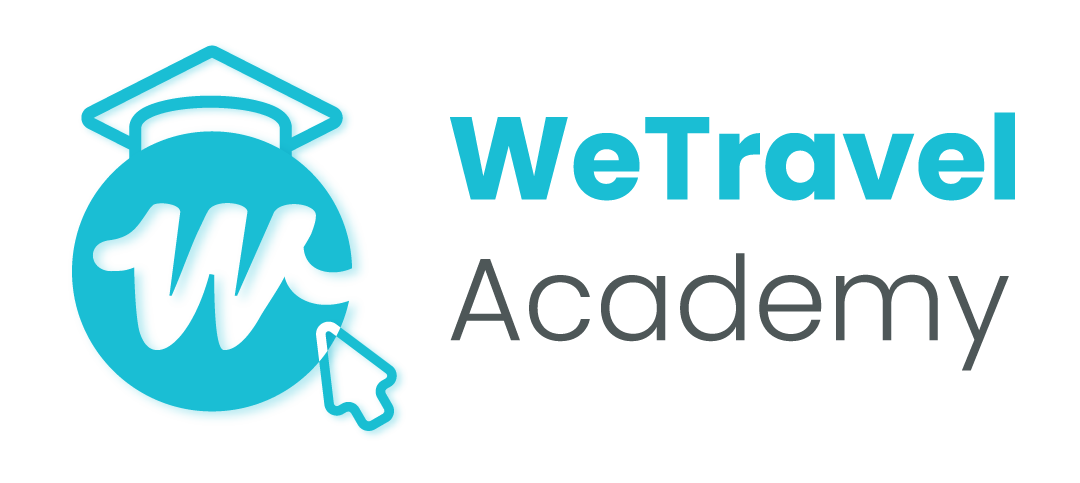It is no secret that strategic SEO tactics for the travel industry can skyrocket your business growth.
Google is generally the first place people go to to ask travel questions or plan their trips. If your travel website is at the top position for important search queries, you have the potential to generate loads of valuable organic traffic.
This traffic is highly targeted, which means that your visitors have a good chance of turning into customers.
This is why SEO for the travel industry is one of the most valuable marketing strategies out there. Not to mention successful SEO delivers long-term results.
While there’s a lot that goes into an effective travel industry SEO strategy, getting the basics right is actually pretty simple. And it’s these basics that will often make the greatest impact.
In this guide, we’ll focus on some of the most important aspects of SEO that are often overlooked. Apply these tactics to your travel website SEO strategy and you might see a big boost in search rankings.
Understanding Travel Website SEO
While mastering SEO can be a pretty technical business, getting your SEO basics right and optimizing your website content doesn’t have to be tricky.
Before we get into the nitty gritty of our travel website SEO best practices, let's first establish a quick understanding of SEO. Basically, SEO content creation is about making sure the content you publish on your website is optimized for search engines.
The goal is to rank at the top spots in search engine results pages (SERPs) for the right search terms (keywords).
There are two essential factors you need to remember for a successful SEO strategy. The first is offering a great user experience. Search engines are smart, and they index and rank content based on relevancy and search intent.
If your content offers value to the user based on their search query, then there’s a good chance it will perform well.
So, the first step to successful SEO is providing great, useful, relevant content on your website.
The second consideration is that you need to make sure that your content and website are search engine-friendly. This involves covering the right technical details to ensure your content gets indexed correctly and has the best chance of ranking for the right search terms.
So when you create content for your travel website, remember to think of the user as well as the search engine.
While we won’t go into too much detail about creating user-friendly content here, we will explore some easy and effective hacks that you can use to help search engines understand your content to improve its ranking.

SEO For The Travel Industry: 5 Details To Remember
Google’s algorithm has over 200 different ranking factors. This means there are many different elements that go into getting your content to rank at the top positions.
Here are five essential details to look out for when creating SEO-friendly content. Get these details right on your travel website, and you’ll significantly improve your chances of hitting the SERPs.
1. Optimize Your SEO Titles And Meta Descriptions
The first step to successful SEO content creation starts with finding the right target keyword. Here’s a nifty guide on travel keyword research to help you roll this out effectively.
Once you have established your target keyword, you’ll need to make sure you use it correctly within your content. Two areas where your keywords will make the most impact are in your SEO titles and meta descriptions.
When you type something into Google and scroll down the search results page, you’ll see a list of indexed content. This will include the title of the page (written in blue), and a short snippet of what information the page offers written underneath the title. These elements are the SEO title and the meta description.
Before you publish your content, you have the option to update these elements. This is a standard feature in any content management system. If you don’t indicate these elements, Google can choose what to showcase instead. This may be a random snippet of your content, which may not have much of an impact on the SERP.

It’s vital that you update these elements to include your target keyword. This will help your content achieve two things:
- It will communicate your target keyword to Google more clearly, which will help your page get indexed for the right search queries.
- It will add more relevancy to the user's search query. If a user searches for your keyword, and your keyword is present in your page title and description, there’s a higher chance that this will result in a click.
So, always remember to add your primary keyword to these two web page elements. And when updating this, also make sure that you use the correct number of characters in your title and description. This will prevent the elements from getting cut off in the SERP.
2. Optimize Your URL Slug
Your URL slug is another vital element of your on-page SEO structure. This is the short part of the text at the end of your URL that usually follows “.com”.
When search engines crawl your content, they pay close attention to your URL. This means it's important that your URL slug also offers relevancy in order for the page to get indexed correctly.
The first step to optimizing your URL slug is to include your target keyword in it to help search engines understand what the page is about.
Next, ensure that your URL slug isn’t too long or doesn’t offer any unnecessary characters or words. This could confuse search engines and impact the user experience. In many cases, sticking to the main keyword will suffice.

A good URL tip is to avoid using any numbers where possible. For example, the title of your page might include something along the lines of “5 tips for…” or “... in 2022”. If you update these pages at a later stage to include more tips or a new date, then the URL slug won’t make sense anymore.
If a user sees an old date in your URL, they might avoid it. Your URL makes an impact on both search engines and users, so it’s important to keep it simple and relevant.
The most important aspect to keep in mind when it comes to the slug is that you should never change your URL once your page has been indexed.
Once you set your URL slug when publishing your page, the URL needs to be locked in. If you make any changes to your URL later on, you’ll lose all the SEO juice that the page would have contained. And any backlinks pointing toward your page will also be lost.
3. Optimize Your Images
Adding images and visual elements to your content is an excellent way to improve the user experience and boost your rankings.
When you follow this practice of adding images to your content, it’s important that you’re aware of all the small details that can make a difference to your travel website's SEO.
Start by making sure that your images are properly compressed. You can use a simple free tool like this to reduce your image sizes before you upload them to your page. This will help your pages to load faster, improving your server response time.

Site speed is an important ranking factor for Google, and reducing the sizes of your images is one of the easiest ways to optimize this.
The next step is to make sure that you properly name your images. Try to organically include your keywords in the name of your image file, as well as its alt tag on your CMS. (This is necessary because search engines can read your image file which tells it what your image is of).
Using your alt tag and file name strategically can help you communicate to search engines what the image depicts. This can help you rank on image searches. It also adds more relevancy to your content for your target keyword. This is especially important when including infographics.
Remove any words like “hero banner, full, or mobile” when naming your images. These words might be useful to you, but search engines won’t interpret them in the same way.
If your images don’t tell search engines that they’re related to your content topic, then the search engines might not know whether your content is truly relevant to the keyword.
4. Optimize Your Heading's Structure
The way you structure your content achieves two things: it enhances the user experience, and it helps search engines understand your content better.
Headings on your pages provide a hierarchical structure that crawlers use to understand the relevancy and depth of the content. It's essential that you are strategic in your structuring so that it makes sense for search engine crawlers.

Luckily, it’s straightforward to structure your web pages properly. All you need to do is start with an H1, then move into H2s. If you have subheadings underneath H2s, make sure these are an H3, etc. Avoid jumping from an h2 to an H4, and never include more than one h1 title on your page.
It’s also crucial that you follow an index structure on your pages. Include a jump text index at the beginning of your content to help users navigate to relevant sections. This can enhance the reading experience in a big way.
Another essential element of SEO for the travel industry is to include keywords in your headings and titles where they make sense. Headings communicate what your content is about, so having keywords in these sections can help search engines understand how to rank your content.
5. Optimize Your Research
Search engines are smart, and they rank content based on relevancy, authority, and how much value it will bring the user. This means that the top-ranking pages on SERPs generally offer the exact and most valuable answer to a user’s query.
If your aim is to get your pages to rank at number one, then you’ve got to conduct thorough research into the search intent of your keyword. You’ll achieve this by analyzing the top-ranking pages.
A good practice is to go through the SERP and analyze the results that are above or below your URL and see what they've included that you might have missed.

This can help you identify missing content and creative angles that could make your content more relevant or exciting to the user.
Once you have published content, it's always a good idea to go back to it after two weeks to a month (once it has been indexed) and update your content to make it more relevant.
Your main goal in SEO is to offer more relevant, valuable content than your competitors. Get this right, and you should be on a fast track to reaching the winning positions.
Summary
Nailing the SEO tactics for your travel business doesn’t have to be complicated.
By tapping into and optimizing the simple elements listed above, your content will stand a higher chance of ranking well in the SERPs.
Having a solid SEO strategy in place is paramount. Especially since search engines are always changing.
This means it's important to review and update your content on a regular basis to ensure that it always meets the right requirements.
Luckily, this is manageable as long as you keep in mind what search engines look for when ranking your content.
Get SEO right, and you’ll be able to attract loads of free traffic to your travel website. This is without a doubt one of the most valuable digital marketing strategies available to you.
New resources, straight to your inbox
We’re committed to your privacy. WeTravel uses the information you provide to us to contact you about our relevant content, products, and services. You may unsubscribe at any time.





